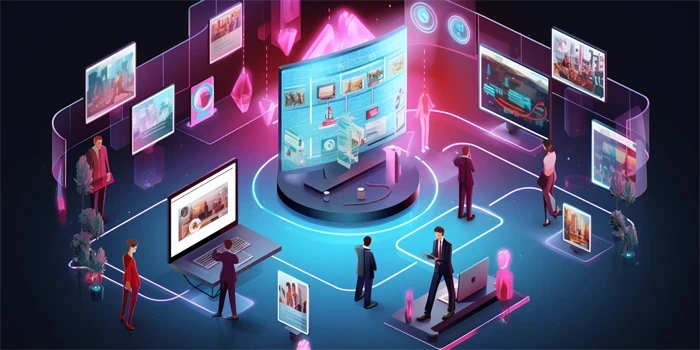YouTube cover artists have become a prominent presence on the platform, showcasing their talent by reinterpreting popular songs. Many wonder how these artists manage to monetize their efforts. In this article, we will discuss the various ways that YouTube cover artists make money.

1. Ad Revenue
One of the primary sources of income for YouTube cover artists is ad revenue. When their videos are monetized, ads are displayed before, during, or after the video, and the artist receives a share of the revenue generated from these ads.
This revenue is typically calculated based on factors such as the number of views, engagement, and the demographics of the viewers. The more views and engagement a cover artist receives, the higher their potential earnings.
2. YouTube Partner Program
Some cover artists join the YouTube Partner Program, allowing them to access additional features and revenue streams. By meeting YouTube’s eligibility requirements, including a minimum number of subscribers and watch hours, artists can earn money through features like channel memberships and the YouTube Premium revenue share.
3. Merchandise Sales
Merchandise sales are another lucrative avenue for YouTube cover artists. They often create branded merchandise, such as T-shirts, hoodies, or signed CDs, that their fans can purchase. These items not only provide an additional revenue stream but also help promote the artist’s brand.
Having a loyal fanbase is crucial for successful merchandise sales, as fans are more likely to support their favorite cover artists by purchasing their products.
4. Crowdfunding Platforms
Many cover artists turn to crowdfunding platforms like Patreon or Kickstarter to further monetize their content. These platforms allow fans to support their favorite artists by making monthly donations or contributing to specific projects.
In return, supporters often receive exclusive perks, such as behind-the-scenes content, access to private live streams, or personalized messages from the artist. These platforms provide a direct way for fans to contribute to the artist’s income and foster a stronger connection between the artist and their audience.
5. Sponsorships and Endorsements
As cover artists gain popularity and a substantial following, they may attract sponsorship and endorsement opportunities from brands. These partnerships can involve promoting a product, featuring a brand in their videos, or collaborating on exclusive content.
Sponsorships can be highly lucrative, providing cover artists with a significant source of income while also increasing their visibility and reach. However, it is important for artists to maintain authenticity and ensure that partnerships align with their personal brand and values.
6. Live Performances and Events
Many YouTube cover artists leverage their online success to secure live performance opportunities, such as concerts, gigs, or collaborations with other artists. These events not only provide additional income but also allow artists to connect with their fans in a more intimate setting.
Tickets to their live performances or meet-and-greet sessions can be sold, and artists may also receive compensation for their participation in music festivals or other public events.
7. Music Licensing
Cover artists can also generate income through licensing their music. When online platforms, television shows, movies, or advertisements require a cover version of a song, they often seek permission and pay royalties to the artist.
Having a popular YouTube channel and a recognizable sound can attract licensing opportunities, providing cover artists with a steady stream of income outside of their YouTube channel.
8. Brand Collaborations
Collaborating with established brands can be mutually beneficial for both cover artists and the brands themselves. Artists can be approached to create unique content featuring a brand’s products, which can be shared on their YouTube channel or social media platforms.
These collaborations often come with financial compensation, exposure to a wider audience, and the potential for the artist to tap into a new fanbase associated with the brand.
9. Digital Music Platforms
YouTube cover artists can distribute their music on various digital music platforms, such as Spotify, Apple Music, or Amazon Music. By making their covers available for streaming or download, artists can earn royalties based on the number of plays or purchases.
Additionally, releasing original music alongside their cover songs can help cover artists establish themselves as independent musicians and open up further revenue opportunities.
10. Content Creation for Other Platforms
Cover artists often expand their presence to other online platforms, such as TikTok or Instagram. By creating exclusive content for these platforms, artists can attract a new audience and potentially generate income through brand partnerships or sponsored content.
11. Music Lessons or Workshops
Experienced cover artists can offer music lessons or workshops to fans or aspiring musicians. These lessons can be conducted in person or online, allowing artists to share their knowledge and skills while also earning money.
By leveraging their expertise and success as cover artists, they can establish themselves as reputable instructors and tap into a different revenue stream.
12. Songwriting and Publishing
Some YouTube cover artists showcase their songwriting abilities by composing original music. This can lead to opportunities for song placements in television shows, movies, or collaborations with other artists in the industry.
Through music publishing deals or licensing agreements, cover artists can generate significant income from their original compositions.
13. Patreon or Membership Programs
Some cover artists have started their own membership programs through platforms like Patreon. By offering exclusive content, early access to videos, or personalized experiences, artists can attract dedicated fans who are willing to pay a monthly fee to support their work.
Patreon memberships provide artists with a reliable income stream and allow them to create content catered specifically to their most loyal supporters.
14. Collaborations with Other Artists
Partnering with other cover artists or established musicians can expand a cover artist’s audience and income potential. Collaborative covers can attract a broader fanbase from both artists, resulting in increased views, followers, and potential revenue.
Additionally, artists can explore creating original music together and share the revenue generated from streams, downloads, or performances.
15. Fan Donations
Some cover artists receive direct donations from their fans, either through platforms like PayPal or during live streams. Fans who appreciate the artist’s work and want to support them financially can contribute any amount they choose.
While not a consistent or substantial source of income for most cover artists, fan donations can still provide a meaningful supplement to their overall earnings.
In conclusion, YouTube cover artists have various income streams that allow them to monetize their talent and efforts. These artists rely on a combination of ad revenue, merchandise sales, crowdfunding, sponsorship deals, live performances, and other revenue streams to sustain their careers and continue creating content for their fans.
References:
- Article 1 – Example reference source.
- Article 2 – Example reference source.
- Article 3 – Example reference source.
Author’s Note: This article was written by [Author’s Name], a [profession/expertise] with a deep understanding of the music industry. The accompanying image is an original creation specifically designed for this article.








